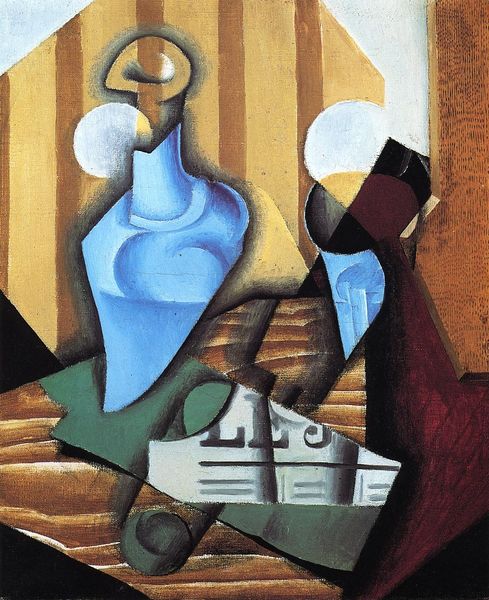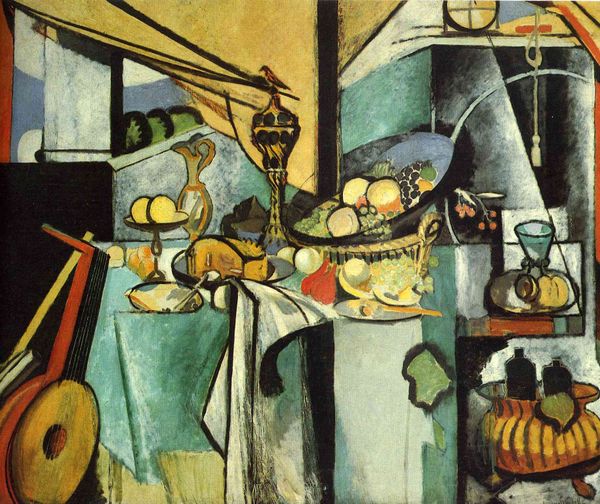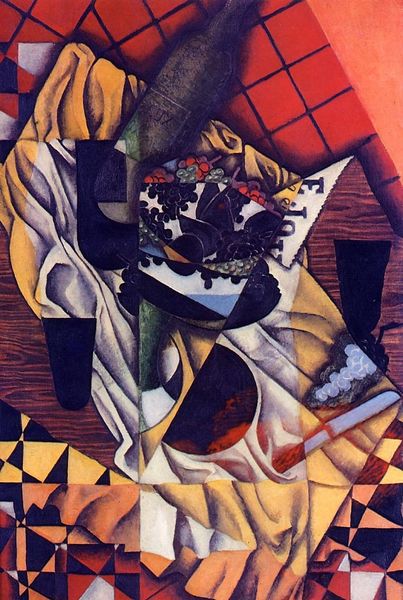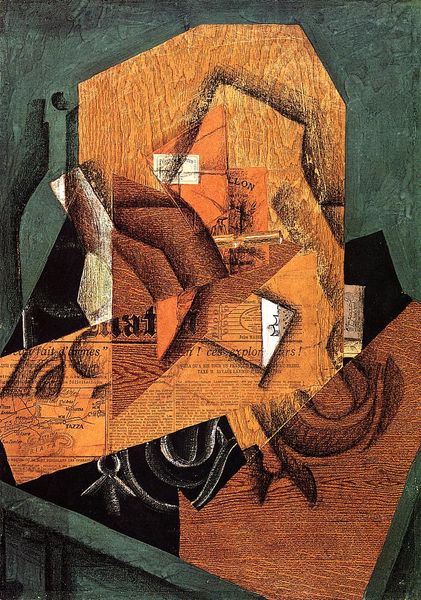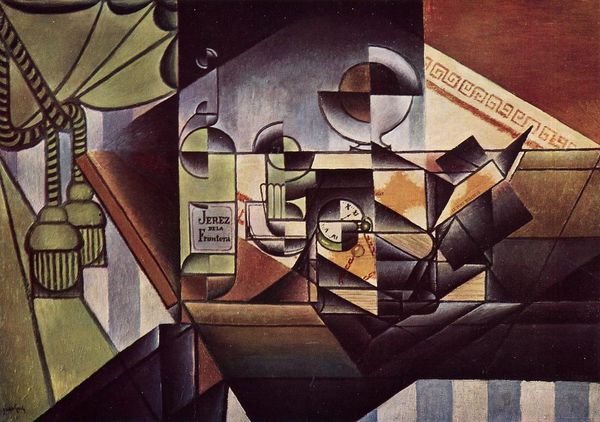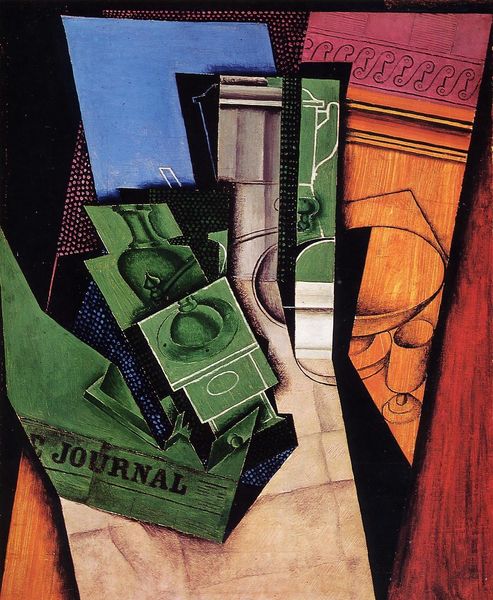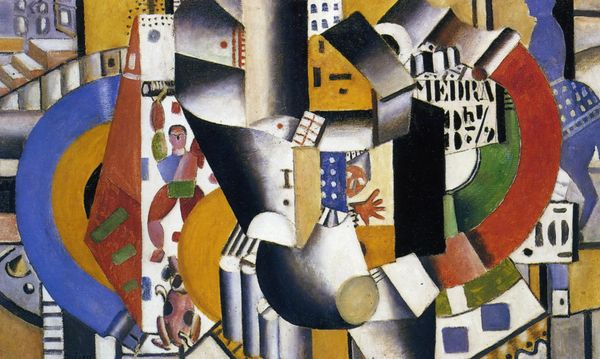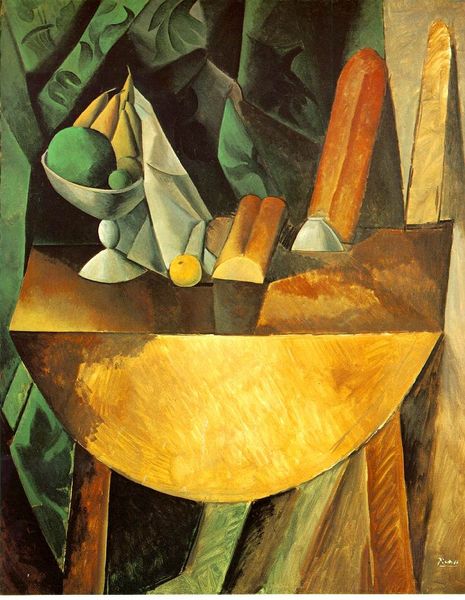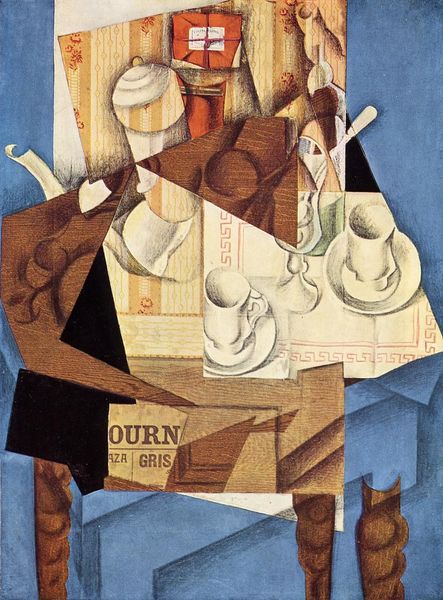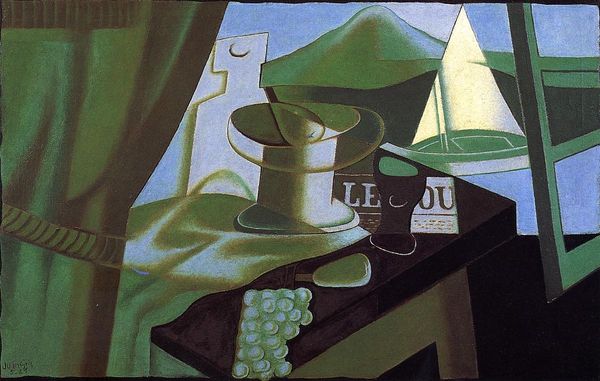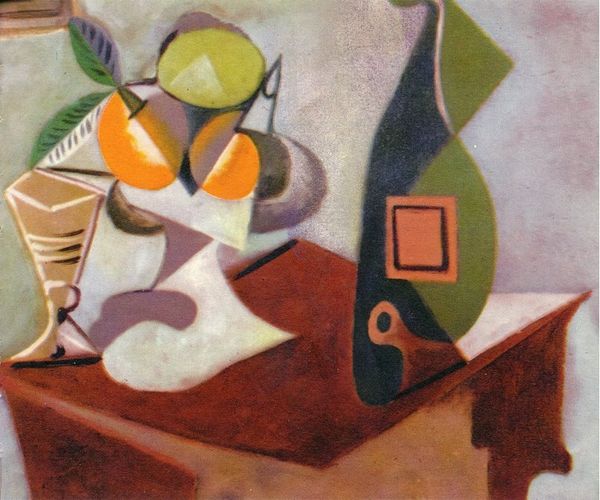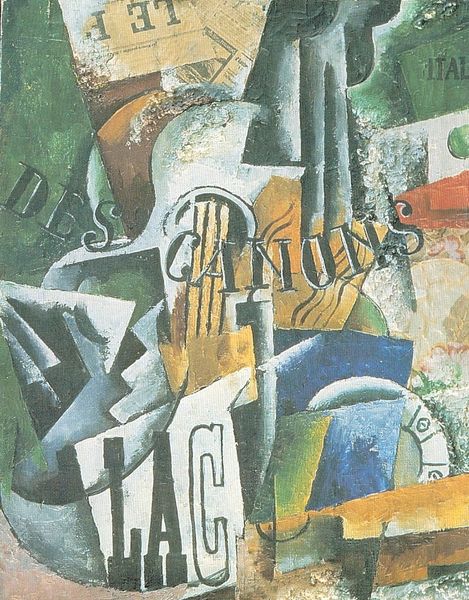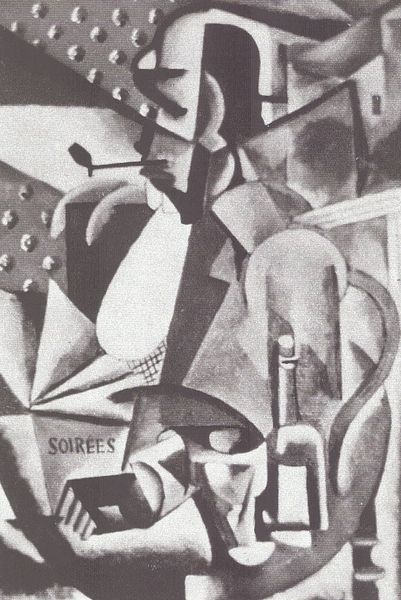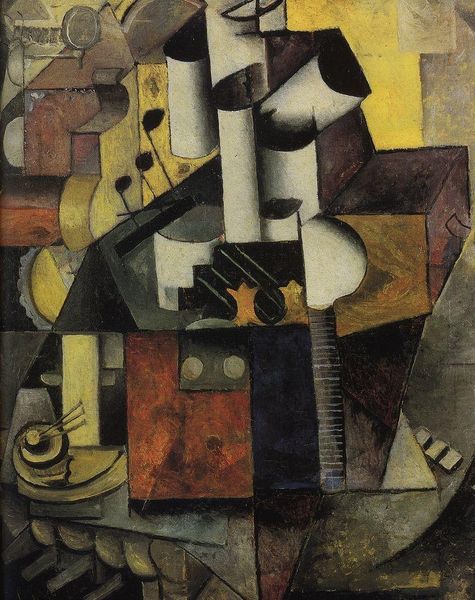
painting, oil-paint
#
art-deco
#
cubism
#
painting
#
oil-paint
Dimensions: 54.5 x 73 cm
Copyright: Public domain
Editor: We're looking at Juan Gris's "Pears and Grapes on a Table," painted in 1913. It’s an oil painting that really strikes me with its fractured forms – a Cubist still life that almost feels like a puzzle. What's your take on how Gris is playing with perspective here? Curator: Gris's Cubism wasn't just about fragmenting objects; it was a radical interrogation of representation itself, coinciding with significant societal shifts. Look at how he dissects the traditional still life, questioning established hierarchies and modes of seeing. What sociopolitical tensions might have fueled this artistic dismantling? Editor: I hadn't thought about the politics of still life! Are you suggesting this dismantling mirrors a broader disruption? Curator: Exactly! Consider the rise of industrialization, mass production, and the burgeoning feminist movement. These challenged conventional power structures. The fractured perspective, does it speak to a world experienced as increasingly fragmented, unstable, and viewed through multiple, often conflicting lenses? Editor: The objects, like the book with what looks like Chinese lettering, seem chosen to evoke that fragmented feel, too. Curator: Absolutely. How does this visual fragmentation resonate with early 20th-century concerns about colonialism and cross-cultural exchange? Gris seems to intentionally disrupt the illusion of a stable, singular reality. Is he inviting us to question not just what we see, but how we see, and why? Editor: I never considered how much historical context can inform even a seemingly simple still life. It’s incredible! Curator: Art can be so much more than aesthetics. When we connect it to the wider currents of history and ideas, it can show us how art deeply engages with what’s going on in society.
Comments
No comments
Be the first to comment and join the conversation on the ultimate creative platform.
